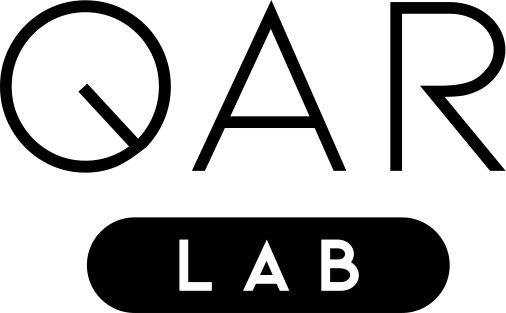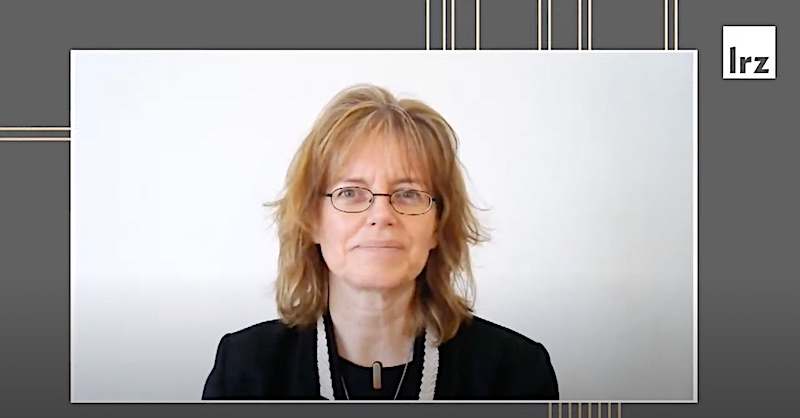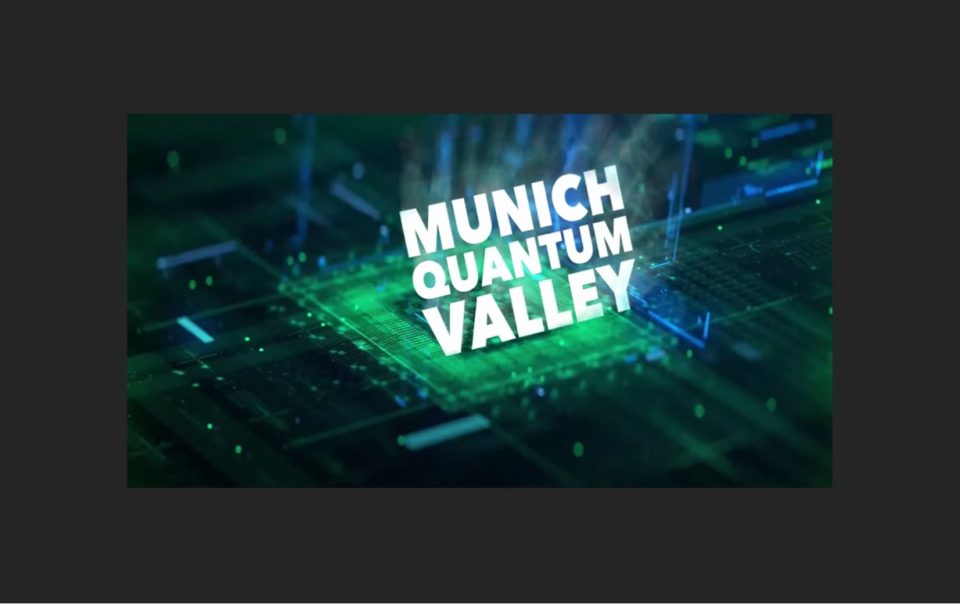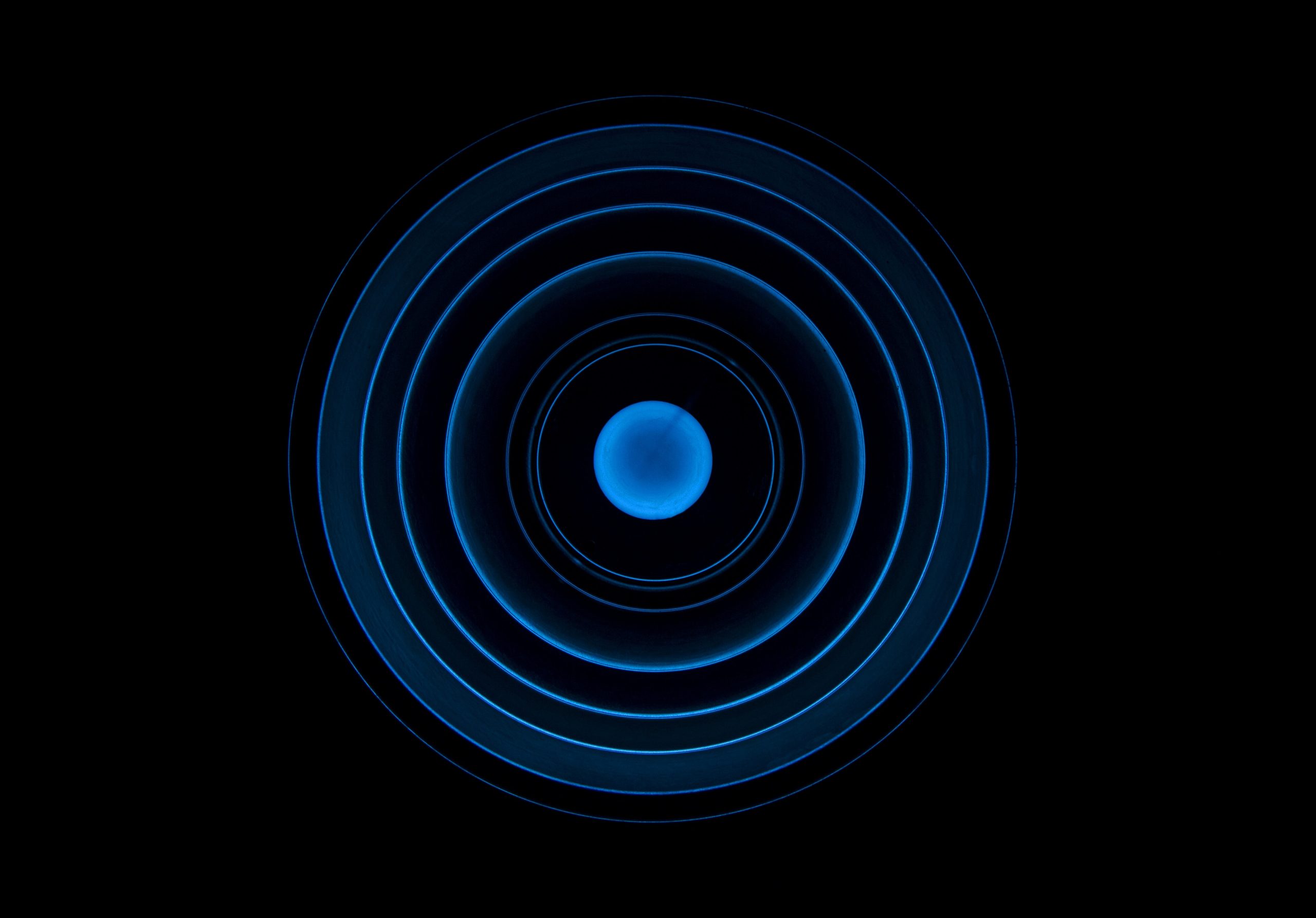March 2021
QAR-Lab in the "Quantum Computing" issue of the DIGITAL WORLD
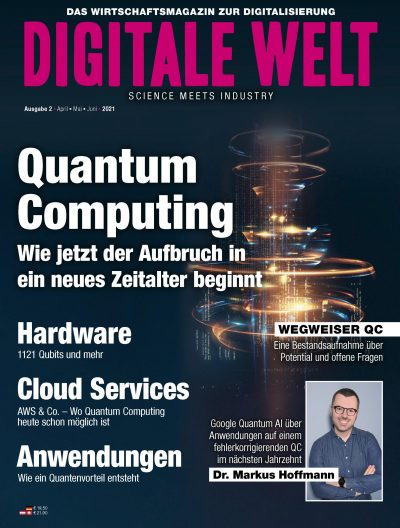 March 04, 2021 – The new issue of DIGITALE WELT is now available and includes selected expert contributions on the current topic focus Quantum Computing. On a technical level, QAR-Lab was able to support the editorial team in the creation of the issue. Here you can read the issue for free.
March 04, 2021 – The new issue of DIGITALE WELT is now available and includes selected expert contributions on the current topic focus Quantum Computing. On a technical level, QAR-Lab was able to support the editorial team in the creation of the issue. Here you can read the issue for free.
Munich Quantum Valley (MQV) kickoff event – QAR-Lab participates in the Bavarian network
04.03.2021, Munich – The kickoff of the Munich Quantum Valley (MQV) initiative took place on March 4, 2021. The aim of the initiative is to make Bavaria and Germany a major hub for research and development in this important future field. Over the next ten years, the Munich Quantum Valley network intends to continue advancing the development of quantum science and technology. In addition to Ludwig-Maximilians-Universität München, the network founders include the Bavarian Academy of Sciences and Humanities, TUM, the Fraunhofer Society, and the Max Planck Society.
Due to the corona pandemic, the official kickoff took place virtually. The invited guests were political representatives, the presidents of the participating institutions, and industry representatives. The participants were present via video conferences and video messages.
The welcome address was given by Hubert Aiwanger (Bavarian State Minister of Economic Affairs, Regional Development, and Energy), Bernd Sibler (Bavarian State Minister of Science and Art), Bernd Huber (Ludwig-Maximilians-Universität München), Thomas Höllmann (Bavarian Academy of Sciences and Humanities), Thomas Hofmann (Technische Universität München), Reimund Neugebauer (Fraunhofer Society), and Martin Stratmann (Max Planck Society).
Prof. Dr. Claudia Linnhoff-Popien, one of the participants in the Munich Quantum Valley, explained in a video message that her Chair of Informatics at LMU already has access to four quantum computers, develops software and applications for the Munich Quantum Valley, and validates them with their numerous user companies.
The two-hour opening featured the presentation of various aspects of the Munich Quantum Valley: the 3-point plan, location and infrastructure, quantum hardware and software, as well as applications and technology transfer.
In addition to the founding members, other important Bavarian and national research institutions and universities with high levels of activity in the field of quantum science and technologies will be efficiently linked to the MQV and participate in its activities. Due to the strength of its founding institutions and the long-term institutional financing, the MQV intends to play a key role in a national and European quantum strategy.
Quantum computing. Why exactly?
Lothar Borrmann
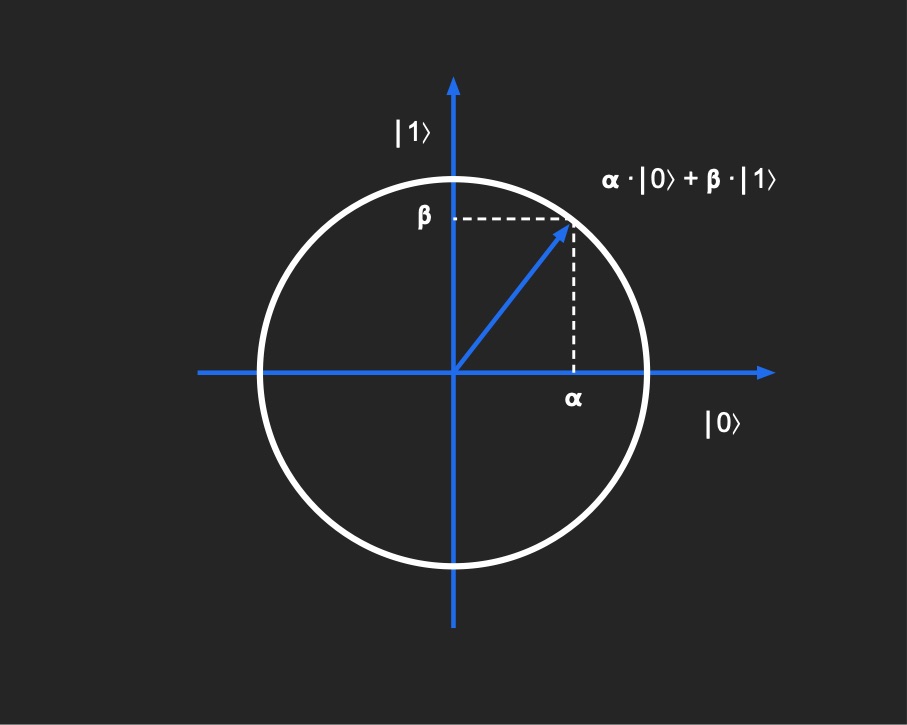
The superposition as a vector
Over the last sixty years or so, the performance of classical digital computers has continued to increase – Gordon Moore sends his regards! In the meantime, however, we are reaching physical limits. Despite all the performance, there are quite a few problems, e.g. in optimization, that our computers cannot really calculate. So far, we have been content with approximations.
In this context, we can only progress if there is a paradigm shift.
Quantum computers (QC) are just such a paradigm shift. Their functionality is not based on bits with a deterministic value of 0 or 1, but on qubits. A qubit is a basic unit of information that can only be correctly described by quantum mechanics and can have different states at the same time – superposition. And along with another quantum physics phenomenon, entanglement, information can be exchanged.
The function of a computer based on this is radically different from what we are used to from computers. And therein lies the advantage. As early as 1994, Peter Shor developed an algorithm for prime factorization on quantum computers showing that they can be used to calculate tasks considered insolvable on conventional computers, that would take years or decades to solve.
So quantum computers will not replace smartphone processors, PCs, or the Linux cloud server. But they do promise a breakthrough when it comes to dealing with very specific problems.
There are now two challenges for the productive use of such systems: Firstly, the construction of a quantum computer with a sufficient number of reliable qubits – i.e., the hardware – and secondly, the programming of such a computer, which follows completely different principles than traditional software.
Many players have been competing to develop the hardware since around 2015, from startups to Google to IBM. And, as is usually the case with such new and immature technologies, very different approaches are being pursued.
However, the use of such experimental machines, even if they are accessible in the cloud, is almost exclusively open to researchers and experts. Therefore, the QAR-Lab focuses on the comparative validation of such different QC architectures, on the development of quantum software, and on solving real-world problems in order to offer users a migration path.
Quantum software encompasses a broad spectrum from hardware-related QC compilers, QC circuits, and QC algorithms to full QC applications. These include, in particular, algorithms that use essential characteristics of quantum mechanics such as superposition or entanglement in the calculation or solving of problems so they can run on quantum computers.
History of quantum computing
Jonas Stein
Quantum mechanics and quantum computing: major scientific revolutions
The discovery of quantum mechanics led to one of the greatest scientific revolutions of the 20th century. As a fundamental theory in physics, it describes the properties of atomic and subatomic matter.
The extent of recent research achievements now points to a second quantum revolution. One of the key quantum technologies is quantum computing, which uses quantum mechanical effects to solve complex problems. This discovery is due to Richard Feynman, who discovered in 1982 that quantum computers could efficiently simulate quantum systems. To date, there are no known efficient traditional algorithms in the problem area of quantum simulation.
The big difference between classical computers and quantum computers is the use of quantum bits instead of the usual bits. These “qubits” are the quantum mechanical equivalent of a classical bit. A qubit is a two-state system and is in a so-called superposition as long as it is not being measured. This means that it is simultaneously in both of the two possible states and only measuring it causes it to disintegrate with a certain probability into either one state or the other. A possible physical realization of a qubit is a photon whose polarization is measured using two orthogonal polarization directions.
Two approaches to quantum computing: gate and annealer
The two main approaches to implementing a quantum computer are, firstly, the quantum gate computer and, on the other hand, the quantum annealer as an approximative implementation of the concept of adiabatic quantum computation. Quantum gate computers perform calculations similar to classical computers by switching quantum gates (instead of the logic gates used in classical computing). Quantum annealers are a completely different form of quantum computers and are inspired by the metallurgical process of annealing. The applied principle is that physical and especially quantum mechanical systems always strive for the energetic minimum.
Despite the different architectures, both systems are equivalent in terms of the computing time required to solve algorithmic problems: any algorithm running on a quantum gate computer can be executed at the same time (worst-case scenario, the number of gates used is increased by a constant factor) on a quantum annealer and vice versa. In order to solve any problem with a quantum annealer, it is necessary to reformulate it as a quadratic optimization problem without constraints. Moreover, the optimization variable must be encoded as a binary number, creating a so-called QUBO problem.
Quantum algorithms and suitable problems
Since the first idea of a quantum computer, quantum-based solution algorithms (algorithms quantum computers can execute) have been developed for certain problems. These quantum algorithms are demonstrably faster than any classical algorithm for these problems could ever be. Furthermore, quantum computers can efficiently solve problems that the current state of the art of classical computers cannot solve. This includes, for example, the problem of finding the prime factorization of very large numbers, on which nearly all common encryption methods are based. As soon as the capacity of quantum computers has increased sufficiently, virtually all the information sent over the internet today could be decrypted. Quantum-safe encryptions have already been developed to prevent that from happening, but it will take several years before such encryption methods can be used across the board.
In particular, the new quantum technologies offer far-reaching opportunities: Quantum communication and quantum cryptography can be used to develop an interception-proof quantum internet.
In 2019, for the first time, a problem was solved on a quantum computer faster than on the best available supercomputer at the time. This experimental proof of quantum supremacy involved a problem far from any practical applications; however, with ever-expanding quantum computers, it will be increasingly possible to solve such problems as well.
One question that arose shortly after the development of quantum computers was: Do quantum computers solve problems (exponentially) faster than classical computers? The hope that quantum computers could efficiently solve NP-hard problems has not been fulfilled, at least so far. Although there are algorithms that provide an exponential speedup, such as Peter Shor’s prime factorization algorithm, all of these problems are in the complexity class of NP-intermediate problems.
Construction of a quantum computer
Since the early 2000s, the construction of quantum computers has progressed rapidly. The first quantum computer with two qubits was constructed in 1998, followed by the market launch of the first commercial quantum computer in 2011, manufactured by the company D-Wave Systems. 128-qubit quantum annealers could be purchased from them for 10 million euros. Currently, D-Wave Systems is one of the few companies offering the hardware. Most other companies, including IBM and Rigetti, only sell computing time on their quantum gate computers. The number of qubits on the largest quantum gate computers is currently about 70, while the quantum annealers from D-Wave Systems already have more than 5,000 qubits. This is mainly because quantum annealers are physically easier to produce than quantum gate computers. The main problem with constructing quantum computers is decoherence, a process whereby a quantum object loses its quantum mechanical properties and “decays” into a classical object. This happens because qubits always interact with their environment, even if that is not desired within a quantum computer. Therefore, most quantum processing units (QPUs), depending on the processor architecture, must be cooled to a temperature close to absolute zero (0 Kelvin) and shielded electromagnetically. Especially the individual cooling of each individual qubit is currently causing major problems.
Outlook
It will be several years before quantum gate computers have a sufficient number of qubits to be used profitably in practical applications. The scientific consensus does not expect that to happen before 2025. But even when that time comes, it is unlikely that all problems will be solved solely on quantum computers. Hybrid algorithms that combine the advantages of both systems are much more likely.
